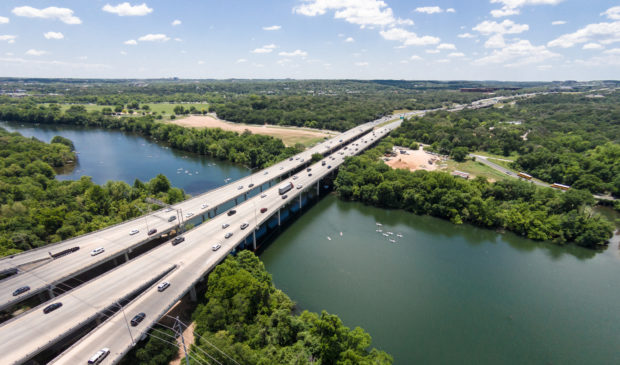Mobility bond discussion occupies Council
Thursday, June 2, 2016 by
Caleb Pritchard Austin City Council treated itself to its first look at the political and financial conditions framing a fast-tracked transportation bond decision on Wednesday.
At a special work session, Council members heard a lengthy briefing on the Mobility Talks public engagement process, bonding capacity and several potential options for bond packages. The five-hour discussion ended with little certainty that the vision for a November referendum offered by Mayor Steve Adler last week will turn into a reality.
Indeed, even Adler himself hedged on imminent action. “I’m not advocating a bond election in November. I’m advocating for us determining whether or not it makes sense to do that,” Adler clarified in the final hour of the discussion.
City staff kicked off the conversation at 9 a.m. with a brief overview of Mobility Talks, an ad hoc outreach program commissioned by Council in March to probe residents’ feelings about mobility issues and potential solutions.
Those efforts reached approximately 7,000 residents across the city through an online survey and public meetings. Among the key findings was the fact that 46 percent of respondents want to prioritize investments in the city’s corridors such as South Lamar Boulevard and Riverside Drive. On the other hand, 28 percent of respondents preferred prioritizing investments in local projects on the neighborhood level, while 26 percent favored investments in regional roadways such as Interstate 35.
Three-fourths of the Mobility Talks participants said they would prefer alternatives to driving alone, including public transit and bicycling.
During Wednesday’s meeting, staff brought forward several bond scenarios starting as low as $250 million. Each one included a laundry list of projects, with price tags that varied depending on the number of projects included. The focus of each scenario remains on corridor projects, but the scenarios also include consideration for other road projects as well as sidewalk and bicycle infrastructure.
Even the most generous of the scenarios comes up far short of the $410 million proposal championed by Bike Austin to fund the 2014 Bicycle Master Plan and high-priority sidewalks. In an email sent to the Austin Monitor on Wednesday afternoon, Bike Austin’s Miller Nuttle said that the scenarios offered to Council gave active transportation infrastructure “pretty short shrift.”
“If City Council is serious about addressing congestion and realizing the promise of Vision Zero, it’d behoove them to increase funding for bike lanes and trails, and make sure that the corridor plans actually fund protected bike lanes and other major mobility improvements along those big streets,” Nuttle said.
Several Council members voiced their own concerns after hearing the various scenarios. Citing the popular reception public transportation received in the Mobility Talks survey, Council Member Delia Garza offered her contrarian take. “I can see where one could glean that the corridors are the priority, but you could also glean that public transportation is the priority,” she said.
Council Member Don Zimmerman said he would prefer to divide any potential bond question into individual packages based on specific modes of transportation. “If we broke them out that way, then we could allow the voters to say what our guiding principles should be,” said Zimmerman, though he conceded that he probably wouldn’t have his colleagues’ support in that effort.
Most vocal in her skepticism of the options before them was Council Member Ora Houston, who said she had “more questions than answers.” She concluded that she wouldn’t support the nascent plans as they are come November.
Searching for compromise was Council Member Greg Casar.
“Even if we can’t get to an agreement on what a bigger package may look like, I think that, at minimum, (with) the safety needed on our major streets and on the most-needed sidewalks and intersections that are most dangerous, I would … hope we could at least come together on that in the next few weeks,” Casar said.
Last week, Adler floated the idea of a $720 million package that would fund projects outlined in six existing corridor study plans along with other road projects. He also suggested designating a smattering of money for sidewalk and bicycle infrastructure.
A package of that size would in one vote eclipse all transportation bond referendums approved by Austin voters since 1998. According to staff, those add up to $638 million. Assuming an eight-year program, staff predicted that a $720 million bond issue would cost the owner of a $250,000 home an extra $5.07 per month by 2021.
It’s possible, however, that Council could end up considering a far smaller package, if indeed it considers any proposal at all.
One group offering cover for bold Council action is the Austin Chamber of Commerce. In an emailed statement sent to media on Wednesday afternoon, the Chamber’s Drew Scheberle echoed the “rail or fail” mantra used in the Chamber-backed $1 billion rail and roads bond campaign that voters rejected in 2014. “We need to roll up our sleeves and act on well-vetted proposals because doing nothing this November will mean even worse congestion and frustration on our roads,” Scheberle said. “We are sifting through a lot of information to ensure we support a balanced, fiscally prudent plan that will provide meaningful relief to the traveling public.”
The next chance for Council members to take a swing at the topic is at the June 14 Mobility Committee. That meeting will feature a public hearing and could produce a recommendation to the full Council before that body goes on its annual July vacation. By state law, Council cannot vote to set a November bond election until August.
Photo by Lars Plougman made available through a Creative Commons license
You're a community leader
And we’re honored you look to us for serious, in-depth news. You know a strong community needs local and dedicated watchdog reporting. We’re here for you and that won’t change. Now will you take the powerful next step and support our nonprofit news organization?



